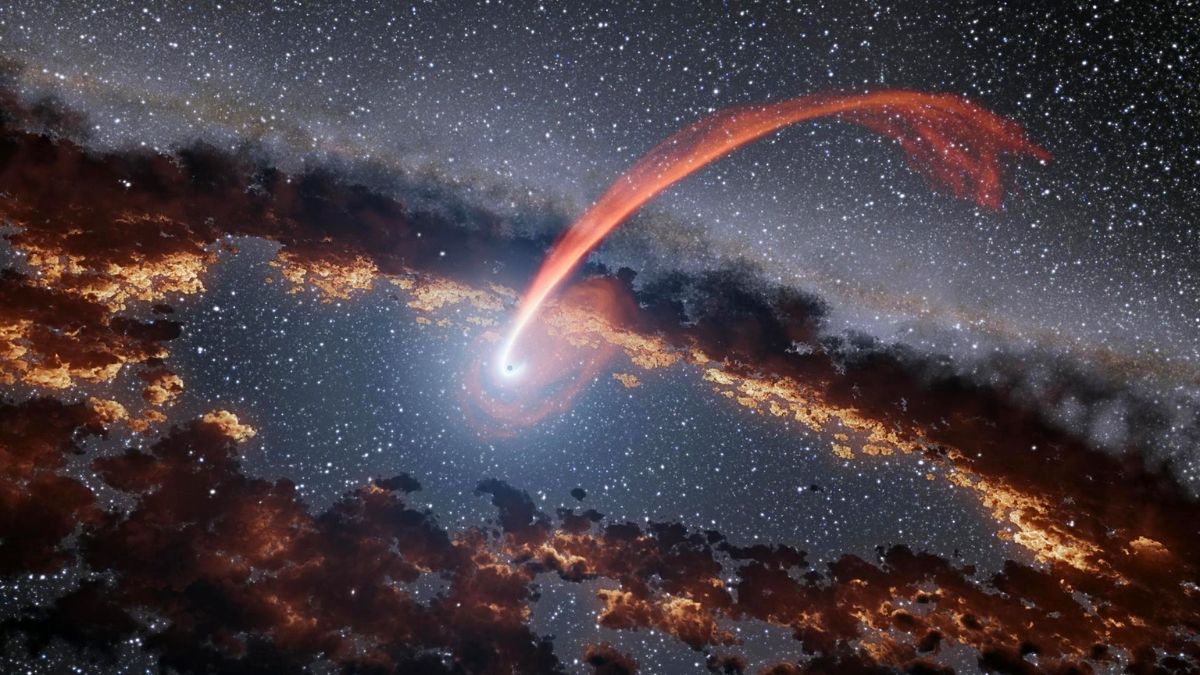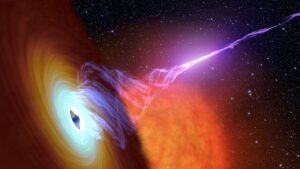A black hole has just made headlines — and it’s not just any black hole. This one, located about 450 million light-years from Earth, suddenly lit up the sky with a powerful flare of light. For astronomers, that was the first clue that this once-quiet giant had “woken up” to devour a nearby star. What makes this discovery even more incredible? This might be the first solid proof of a rare type of black hole that scientists have been hunting for decades.
Let’s break down why this matters so much.
Types
Black holes come in different sizes — and so far, astronomers have confirmed two main types:
- Stellar-mass black holes: These form when massive stars explode and their cores collapse. They can be up to 100 times the mass of the Sun.
- Supermassive black holes: Found at the centers of galaxies, these monsters can weigh millions or even billions of solar masses.
But what about the middle ground? If small black holes grow by consuming matter, then intermediate-mass black holes should exist somewhere in between. The problem? No one had clearly found one — until now.
Discovery
The star of this story is HLX-1, a mysterious object first spotted in 2009 when it emitted powerful X-ray bursts. These X-rays are invisible to human eyes, but space telescopes can detect them.
In 2012, HLX-1 became 100 times brighter than before. Then in 2023, it started to dim again. These changes in brightness gave researchers a valuable clue — the size of the black hole behind it.
Evidence
How can brightness tell you a black hole’s size?
Well, the more massive the black hole, the brighter the X-rays when it pulls in matter. In HLX-1’s case, the X-rays were far too strong for a small black hole but not quite as intense as those coming from supermassive ones.
That led Yi-Chi Chang’s research team to propose that HLX-1 could be a rare intermediate-mass black hole, with a mass estimated between 1,000 and 10,000 times that of the Sun.
Scenarios
So what exactly happened?
There are two main theories scientists are exploring:
- One big meal: The black hole may have swallowed a full star in one go, creating the sudden bright flare.
- A slow feed: The star may be orbiting the black hole, and each time it passes close, the black hole pulls off a little material, creating flares over time.
Astronomer Roberto Soria said they’re continuing to monitor HLX-1. The goal is to find out whether this was a single flare-up or part of a repeating cycle. As he put it, “Now we need to wait and see if it’s flaring multiple times, or if it’s just going to go down until it disappears.”
Impact
If HLX-1 is confirmed as an intermediate-mass black hole, it would be a game-changer.
Why? Because it fills in a missing piece in the black hole puzzle. Scientists still don’t fully understand how supermassive black holes form, and discovering a middle-sized one could finally offer clues.
It might help answer questions like:
- How do black holes grow?
- Do small black holes slowly become massive ones?
- What role do black holes play in shaping galaxies?
HLX-1 could be the first real proof that these in-between black holes are out there, hiding in plain sight.
Future
For now, this black hole has caught the world’s attention — and astronomers are watching closely. More observations are needed before confirming its exact size and nature, but one thing’s for sure: this knowing brings us one step closer to understanding the life cycle of black holes.
If proven, HLX-1 could finally connect the dots between stellar-mass and supermassive black holes, making it one of the most important space discoveries of the decade.
FAQs
Where is HLX-1 located?
About 450 million light-years from Earth.
What makes HLX-1 special?
It might be an intermediate-mass black hole.
How was HLX-1 detected?
Through bright X-ray flares captured by telescopes.
What is an intermediate-mass black hole?
One with a mass between 1,000 and 10,000 Suns.
Why is this discovery important?
It helps explain how supermassive black holes form.
























